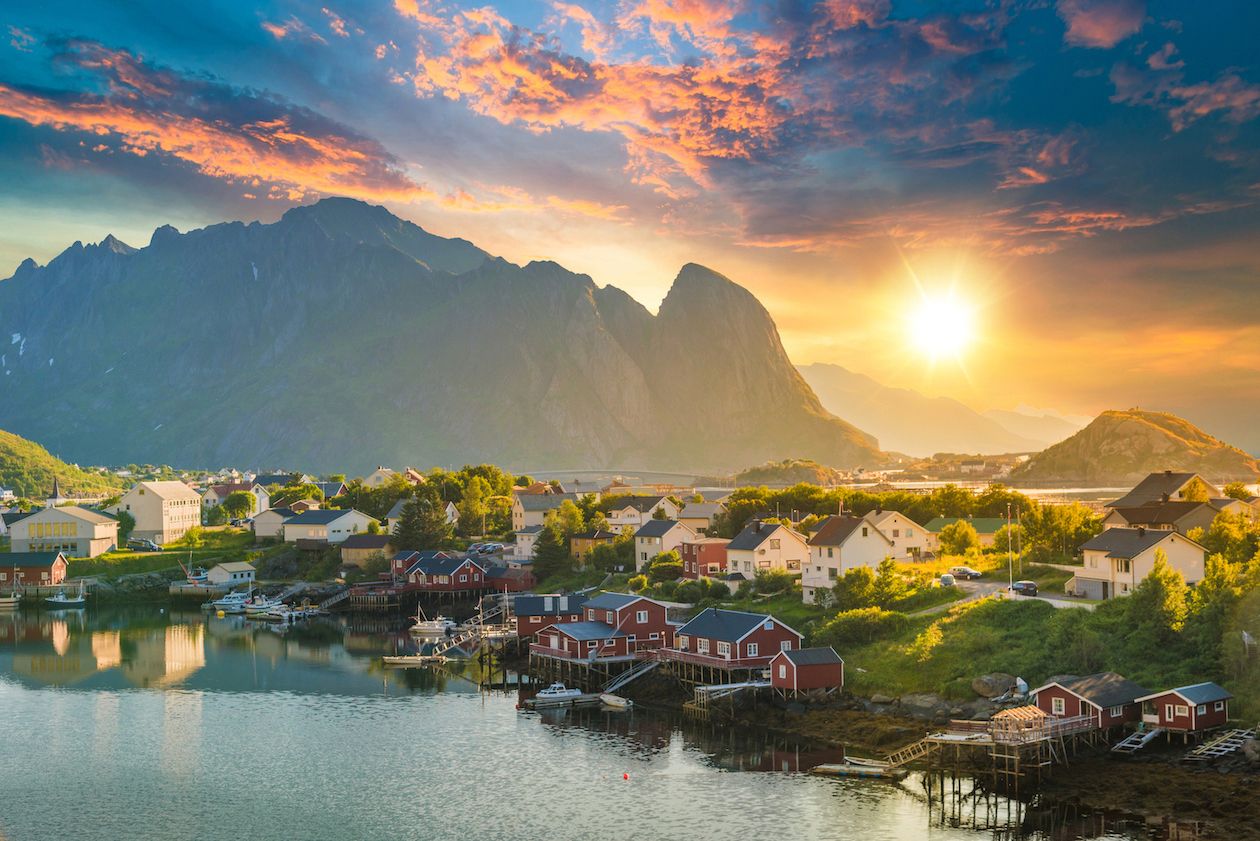The Arctic Circle is home to some fascinating natural phenomena, including the midnight sun - long days where the sun never sets. In the middle of the night the sky is still light. Imagine cutting your grass at midnight, or departing on a hiking trip at two in the morning!
While locals are accustomed to this excess of light, visitors often report feeling jetlagged and experiencing sleep disturbances - their circadian rhythms confused by the long days. But artists and adventurers revel in the disorientating effects of the midnight sun. Christiane Ritter wrote in 1938 of how "the blue light pours over the strange landscape, giving it the serene tenderness and solemnity that all things take on up here in the bright night."
Want to experience it for yourself? Here's our guide to some of the best spots in Norway, ‘the land of the midnight sun’. But first, let's explore the science behind the phenomenon.
What is the Midnight Sun?
Let’s dredge up what you learned many moons ago, in a school science class.
Every 24 hours, the Earth revolves once upon its axis. It’s this movement that creates sunrise and sunset, as places move in and out of the sun’s light.
However, day and night will never be a fixed period of 12 hours each, as the world is tilted on its axis by 23.4 degrees, meaning that the time spent in the sun’s light will vary in different places.
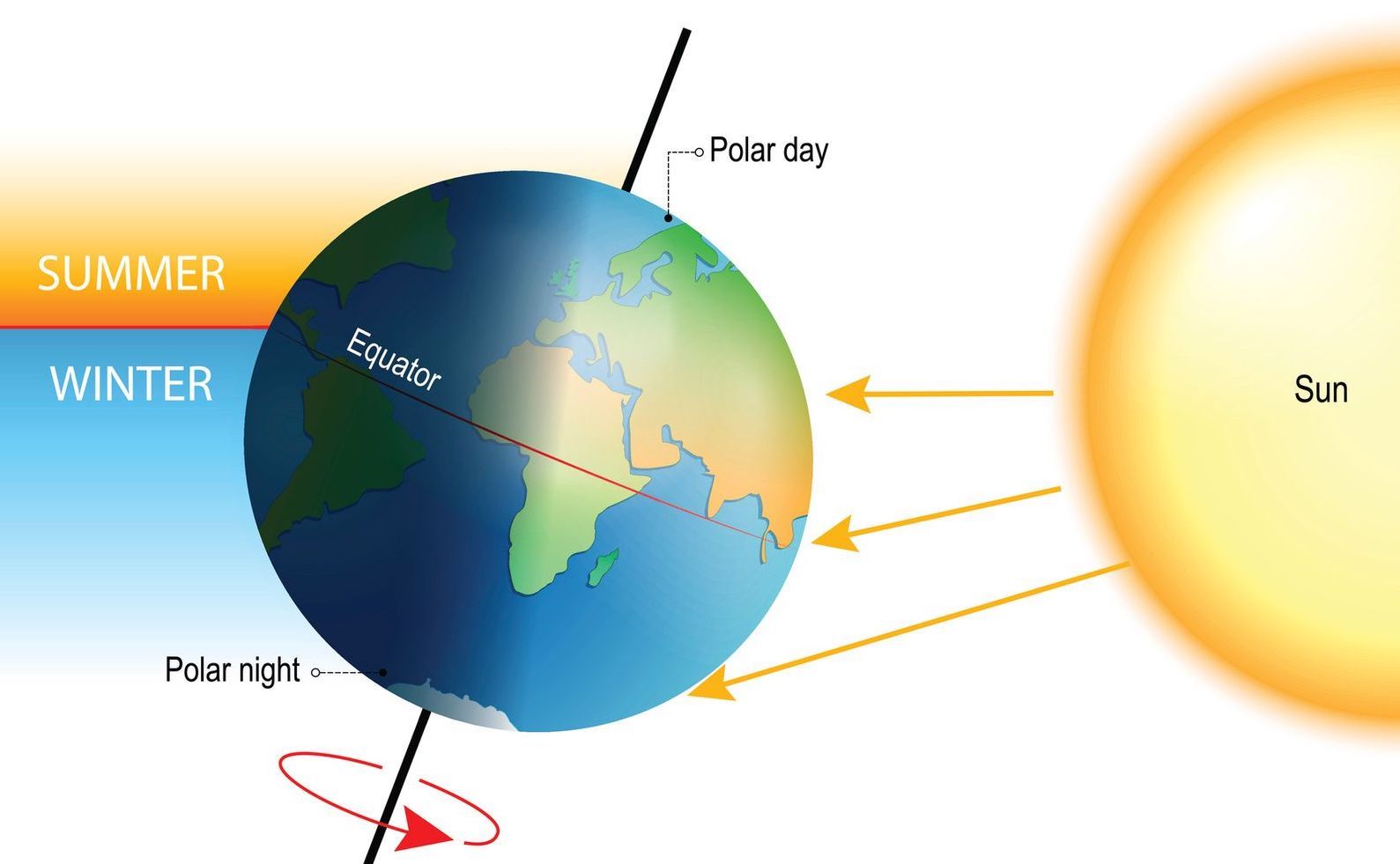
Added to this, the Earth is also orbiting the sun over a period of 365 days. Its tilted access means that at certain times of year it will be closer to the sun than others. This time of year - when it’s tilted directly towards the sun - is summer.
These cyclical movements explain why summer occurs at opposite times of year in both the northern and southern hemispheres. And the axial tilt of the earth explains why the polar regions experience summers of 24 hour daylight, and winters of 24 hour darkness, known as polar night.

What does the midnight sun look like?
Don’t expect to see the sun blazing in the sky for twenty four hours a day. There will still be differences in brightness between midday and midnight. And there will still be sunrise and sunset, only the sun will never dip below the horizon into darkness; it’ll simply rise again.
Artists and writers have commented on the vivid quality of the midnight sun.
In the summertime, the light at midnight, or in the early morning, reveals depths you never see in the south
“There are nuances of colour we only see for sure in the north. Cherry red, leaf green, ash blue - they’re all different here. In the summertime, the light at midnight, or in the early morning, reveals depths you never see in the south,” writes John Burnside, in his Arctic novel A Summer of Drowning.
It’s also worth noting that the midnight sun will appear differently in different latitudes. In the regions between the latitude of 60° 34’, the sun sets but it never gets truly dark - at midnight the landscape is bathed in civil twilight. This phenomenon is known as a white night, and is described by Burnside as that “still, silvery-white gloaming that makes everything spectral.”
Here are five places in Norway where you can see the midnight sun first hand.
5 Places in Norway where you can experience the Midnight Sun
1. Svalbard
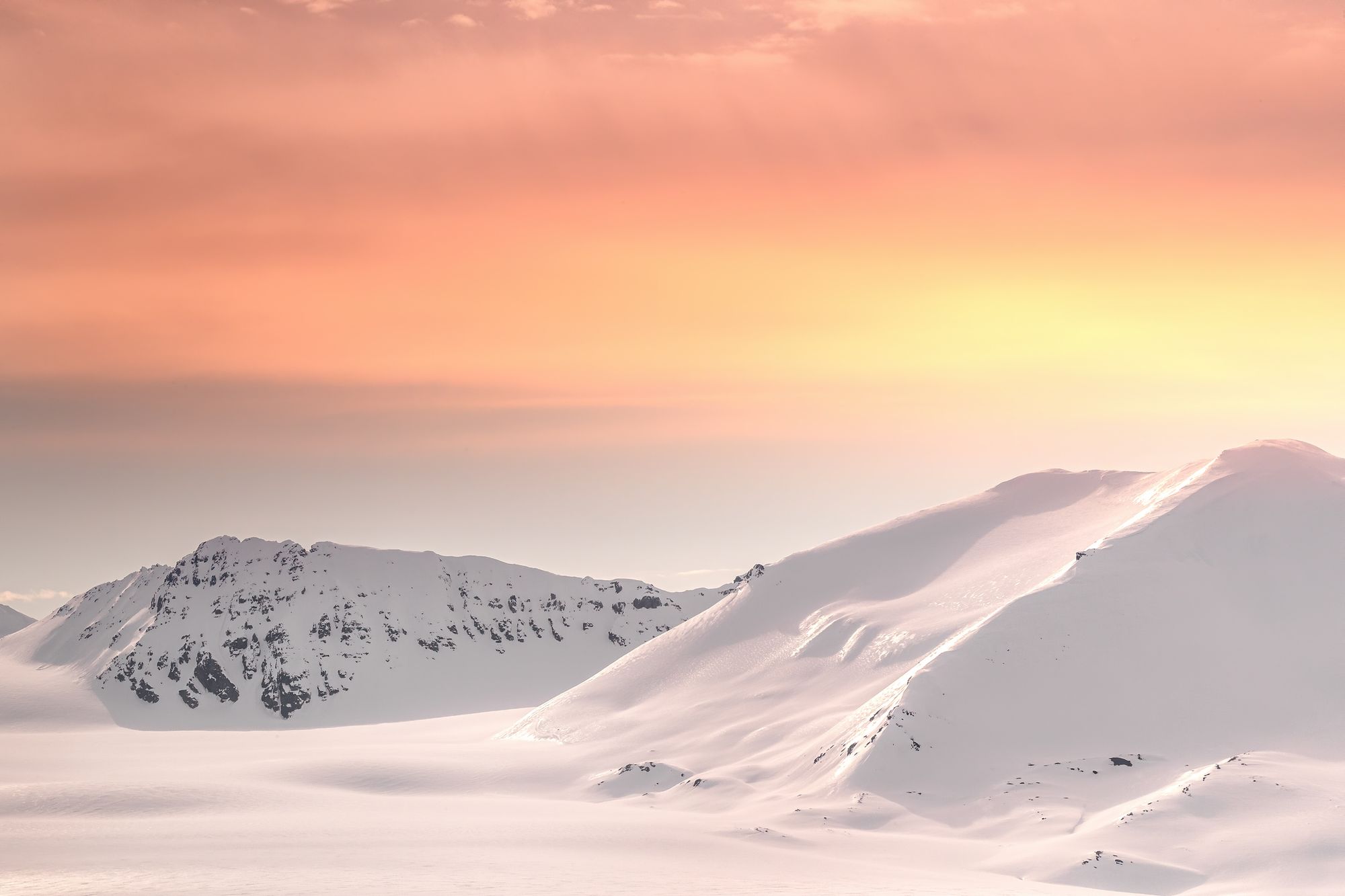
This remote Norwegian archipelago is located in between mainland Norway and the North Pole; its main town, Longyearbyen, is the world’s northernmost settlement. In these high latitudes, you’ll experience twenty four hour daylight for the entirety of the summer months.

There are plenty of wild adventures you can enjoy under the midnight sun on Svalbard. We’d recommend a glacier hike or a Svalbard kayak tour across fjords studded with icebergs. It’s a legal requirement to have a member of your party bearing arms, to guard against the threat of polar bears. For this reason, taking a guided svalbard glacier tour is highly recommended!
2. Tromsø
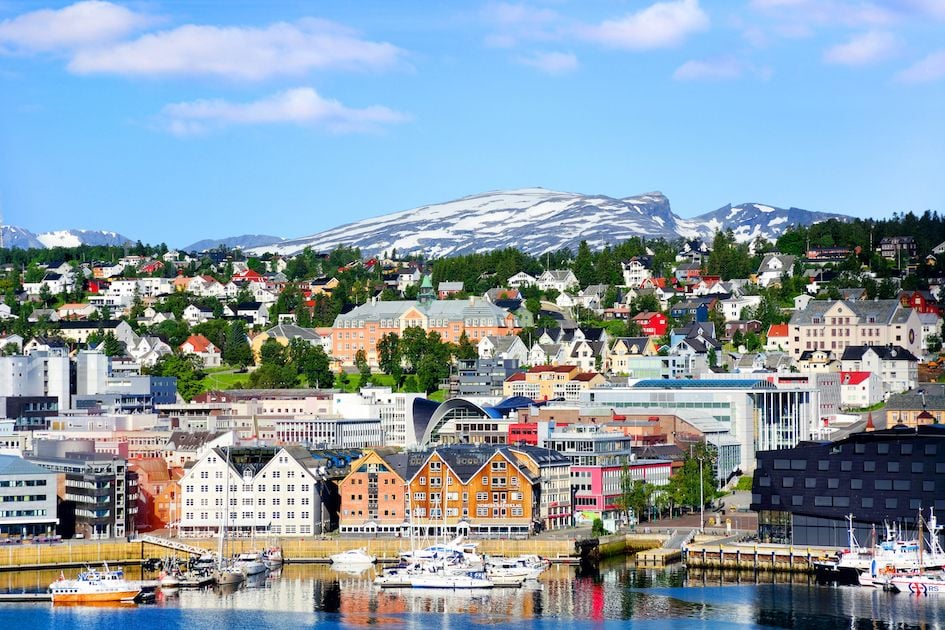
This city in northern Norway is a renowned jumping off spot for sailing the Norwegian fjords and hunting the aurora borealis. But as it’s within the Arctic Circle, it’s the perfect spot for midnight sun seekers.
This energetic university town really comes alive during the summer months. You can dance your socks off at Bukta Festival, held during the height of midsummer, or consider running the Midnight Sun Marathon.
To see the midnight sun in all its glory, take the Fjellheisen cable car up to Storsteinen mountain ledge. You’ll look out onto a landscape of fjords and mountains bathed in golden light.
3. Lofoten Islands
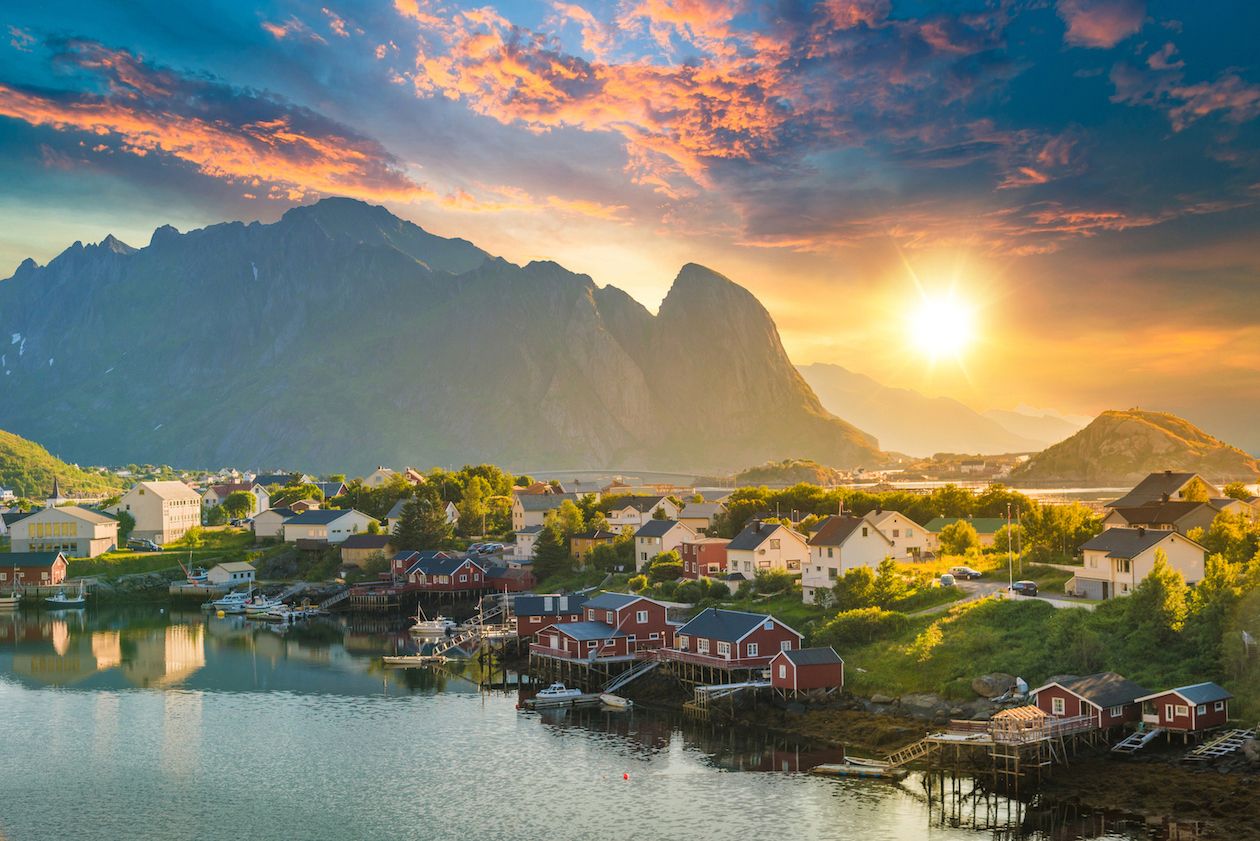
The craggily beautiful Lofoten Islands are located 186 miles north of the Arctic Circle, but have a relatively mild temperature thanks to the Gulf Stream. It’s a gorgeous archipelago of volcanic mountains, glassy fjords and colourful harbour towns, and summer is the perfect time to explore it.

In Lofoten, you get the best of both worlds. You can hike the peaks for sweeping views of the archipelago, or head to the white sandy beaches for a bracing ocean dip. Head out on a multi-day kayaking trip and you’ll see dolphins, puffins and maybe even orcas!
4. Cape Nordkinn
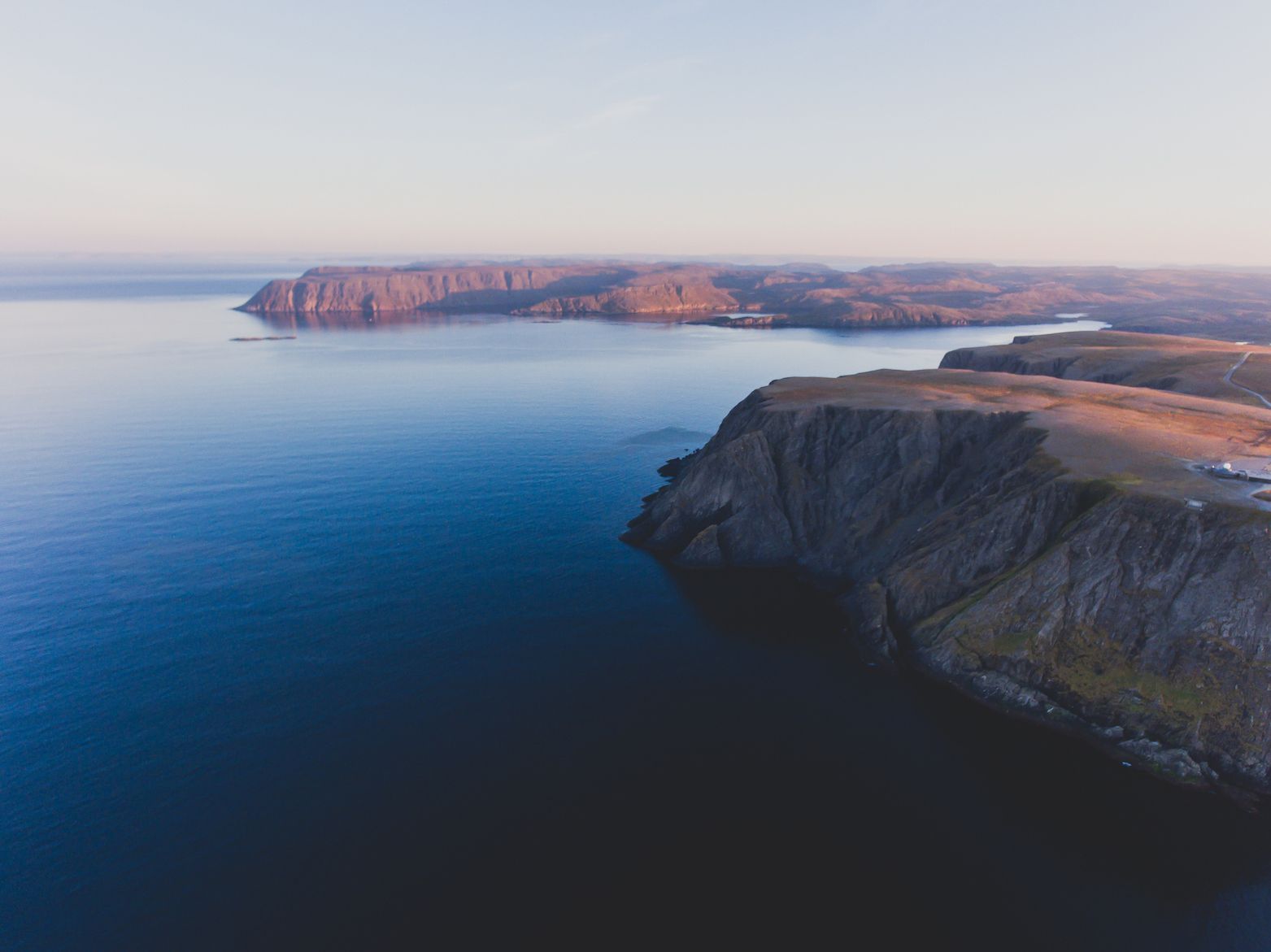
Cape Nordkinn (also known as Kinnarodden) is the northernmost point on the European mainland. It shouldn’t be confused with the North Cape, a spot often mislabelled as being Europe’s northernmost point, which is far more touristy. Cape Nordkinn, meanwhile, is a rugged, stony landscape with sweeping views of the Barents Sea.
Experienced hikers can take one of the hiking trails from Mehamn or Sandfjordvannene out to the Cape, where you’ll be rewarded with a view of the midnight sun suspended just above the horizon.
5. Sommarøy
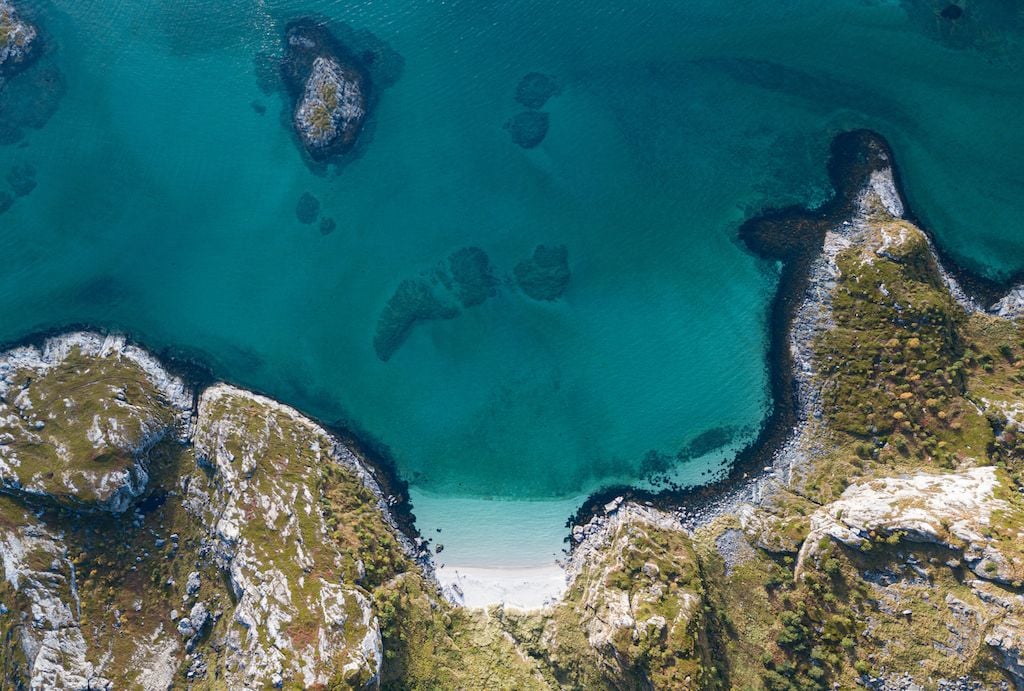
In 2019, the 300 inhabitants of Sommarøy - which translates to ‘Summer Island’ - made the news with their publicity campaign to become a time-free zone, due to the 70 days of midnight sun it experiences every year.
“If we want to cut the grass at midnight we will. If we want to take a swim at 4AM we will,” the campaign video states.
The island is renowned for its “tropical” white sand beaches (although don’t expect the water to be warm). It’s a great spot for sea kayaking and boating expeditions around the nearby skerries, or for just kicking back and catching some midnight rays!
Inspired? Why not join us on one of our Midnight Sun Adventures, in Norway and beyond!
This article contains affiliate links. Which basically means we make a little commission if you click through and buy something. It doesn’t cost you anything, and it just means we can do more good things in good places.


